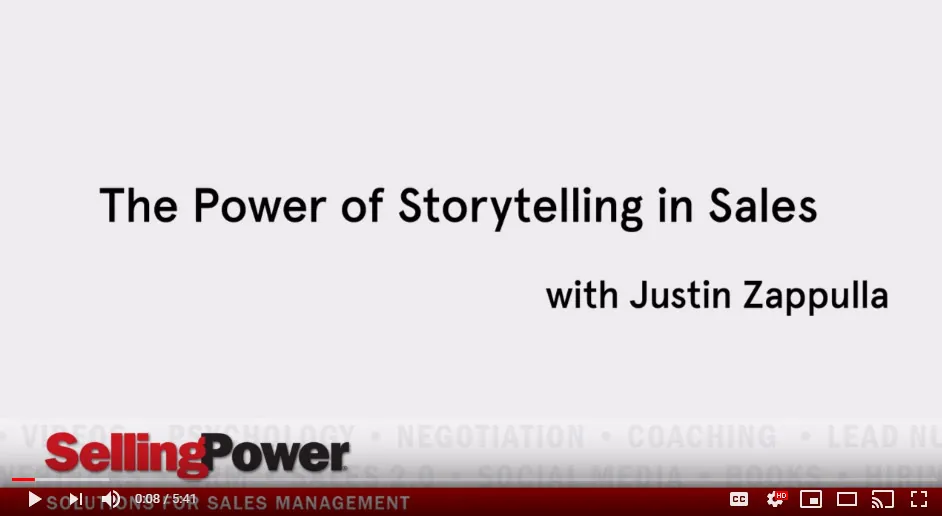Are Sales Demos Critical for Winning Deals?

Sales demos are frequently a part of the sales process, particularly for high-end or complex technological services and products. But there’s an argument to be made that sales reps may be relying too much on their product or service demos and jumping into the demo phase prematurely. After all, every presentation requires a significant investment of time, energy, and resources – an expenditure that might be better spent in cultivating relationships and building your pipeline first.
Michael Pici, Director of Product Growth at Hubspot, notes that one sales rep he spoke to had a 10% drop in call-to-demo ratio. When asked, the rep responded it was deliberate, and that being more selective about who to offer a demo allowed for greater focus on top prospects and freed more time for other selling activities. End result? The rep had their best sales month ever, and a reduction in demos then became standard practice for Pici’s department.
However, in some industries, sales demos are a necessary fact of life. The scope and nature of the product or service is such that they’re unavoidable as part of the selling process. If you do need to have a demo, keep in mind the following guidelines:
- Remember, the demo is not about the product. It’s about the solution.
The single biggest problem we see in failed demos is the sales rep using the meeting as a sales tool. It isn’t. By the time you’ve gotten to the demo stage, you’re almost to the end of the buying and selling processes and are at the very least a finalist in most cases. Therefore, this is the time when you need to focus most clearly on advising – demonstrating (literally) how what you’re showcasing is a solution to a customer’s pain points.Nor is this the time to show off all the latest features and sizzle – unless it directly addresses a prospect’s issues. Going into feature overload and being product-focused will likely either bore your audience or worse, irritate them, because it’s not relevant to their needs. - Do discovery well in advance of the demo.
How do you make sure the demo is tailored to your customer’s problems? Obviously, engage in discovery long before the demo is scheduled. Probe delicately for the information you need to present your offering as a compatible solution. If a prospect insists on getting the demo without discovery, your hoped-for sale is going to be in trouble. Because at that stage, you’re only going to have any external research, which isn’t going to sway your customer.Refusal of discovery points to two deeper issues: 1) you as a sales rep haven’t done your job properly in building a relationship so that the prospect will engage in the collaborative nature of discovery; and/or 2) the prospect doesn’t trust you and thinks they can evaluate your offering just based on what will inevitably be a boilerplate presentation, which will almost assuredly fall flat. - Customize the demo to your customer.
Putting the above two points together, it’s self-evident you need to fashion the demo to your prospect’s problems. “That sounds like a lot of work,” you say. It is. While skilled employees can slap together a generic demo in a short amount of time (such as a brief video), such universal, geared to the norm standard materials don’t do the best job of showing value and translate into missed opportunities.While a short clip or teaser demonstration can raise interest and convert leads to prospects, once you get into the sales rep/prospect demonstration, it’s no longer about the product itself. Rather, you should begin the demo and consistently refer throughout to specific problems you’ve uncovered in the discovery phase and how that product specifically solves those pain points. Taking this tack allows the demo to shine the way it should – as a confirmation and verification that everything you’ve said before about your offering being a solution to the prospect’s issues – tangible, visible, physical proof that’s powerful.What if you’re in a high volume or velocity industry or sales cycle, where you simply don’t have the time to completely customize because you’re giving so many demos every day? In that case, you still deliver a relevant demo experience by creating templates of the most common problems in the verticals you work with, able to address different sales flows for a variety of organizations. You can also then be prepared for small (very small) deviations from them if need be. - Leave time for recaps, feedback, and next steps.
Many times sales reps design demo meeting agendas so that it’s almost exclusively devoted to the demo. While product or service demonstration is obviously the meat of the meeting, improper agenda setting results in loose ends and a missed opportunity to make sure you’re on the right track.Many demos end up looking like this:- Introductions – 5 minutes
- Demo – 54 minutes
- Next Steps – 1 minute
There’s a lot of problems with that – 1) You haven’t verified that your discovery is accurate, 2) There’s no space for feedback to learn how the customer feels about the demo, or what other questions and issues they have, and 3) the next steps are hurried, crammed in a 60 second window. There’s also the risk of prospect fatigue by having a lot of new information thrown at them in an hour, with no time to breathe and reflect.
An ideal demo agenda looks like this:
- Introductions – 5 minutes
- Recap of your findings – 5 minutes
- Demo – 30 minutes
- Feedback – 10 minutes
- Next steps – 5 minutes
See how this paces the meeting much more evenly? It also allows you to make certain your customer is comfortable that you’re hitting their needs and making sure that your solution does in fact solve their problems. This also gives them time to think more carefully about the demo and give thoughtful first impressions as to their sense of the meeting. And rather than be rushed, there’s time set aside to set up the next steps at a clear, unhurried pace.
Notice the essential core element behind all of these guidelines – it’s about tailoring the education of the customer to fit their needs, problems, and desires. And truthfully, not all products and services even require demos – they become an unnecessary complication. You don’t, after all, need to demonstrate how to use a steak knife – any interested customer already knows how to utilize one, and can verify for themselves the quality of your product through research. Instead, it will be the relationship and speaking to the customer needs that nets the sales.
If however, you do need to demo, then following these practices will significantly increase your close rate and revenues gained.

- Account Planning (11)
- Awards (49)
- Client Testimonial (37)
- Personal Branding (19)
- Podcast (11)
- Research (70)
- Sales Career Development (87)
- Sales Coaching (156)
- Sales Consulting (137)
- Sales Culture (170)
- Sales Enablement (354)
- Sales Leadership (109)
- Sales Management (248)
- Sales Negotiation (16)
- Sales Prospecting (125)
- Sales Role-Playing (18)
- Sales Training (235)
- Selling Strategies (263)
- Soft Skills (70)
- Talent Management (94)
- Trusted Advisor (27)
- Virtual Selling (49)
- Webinar (9)


























